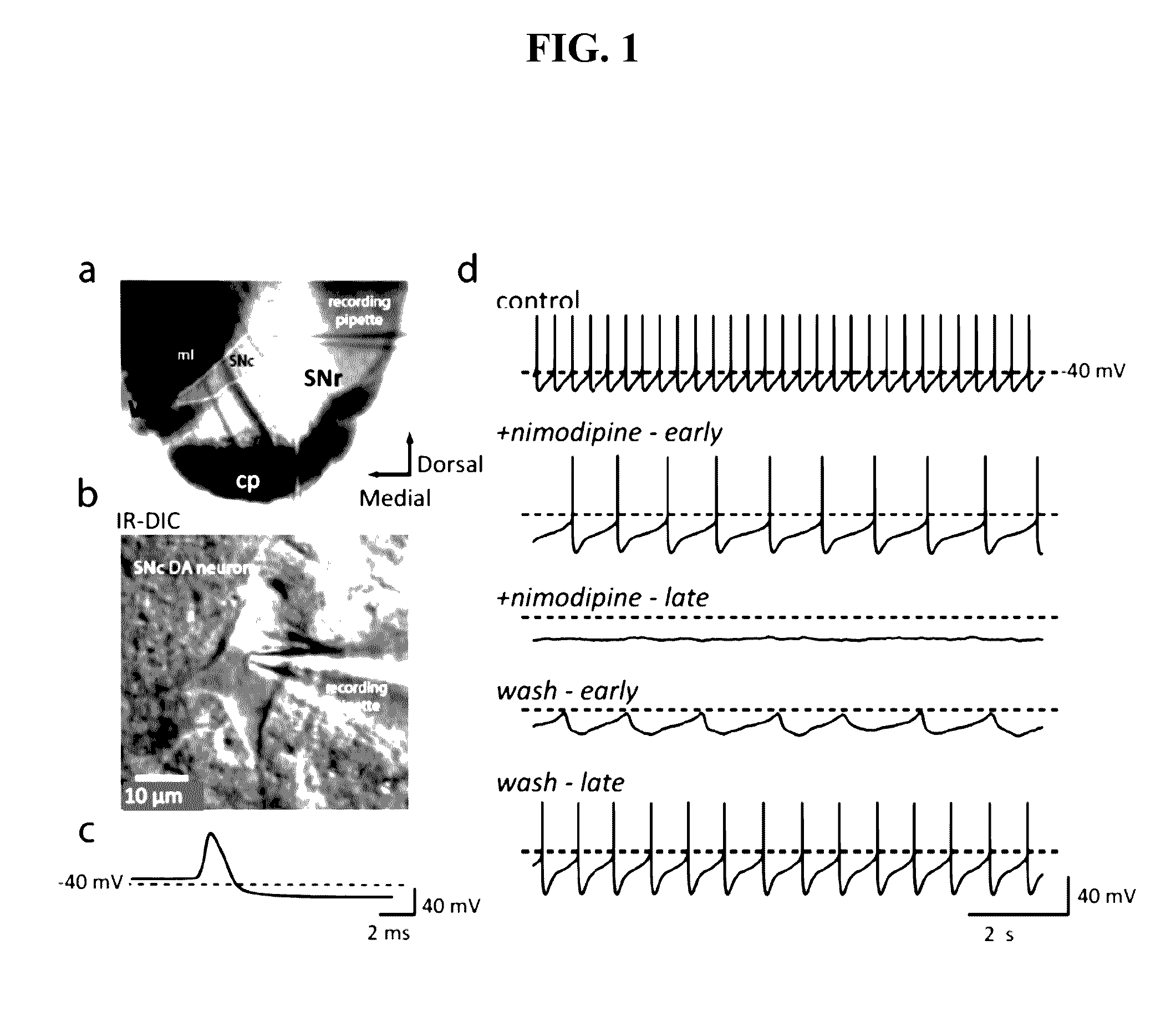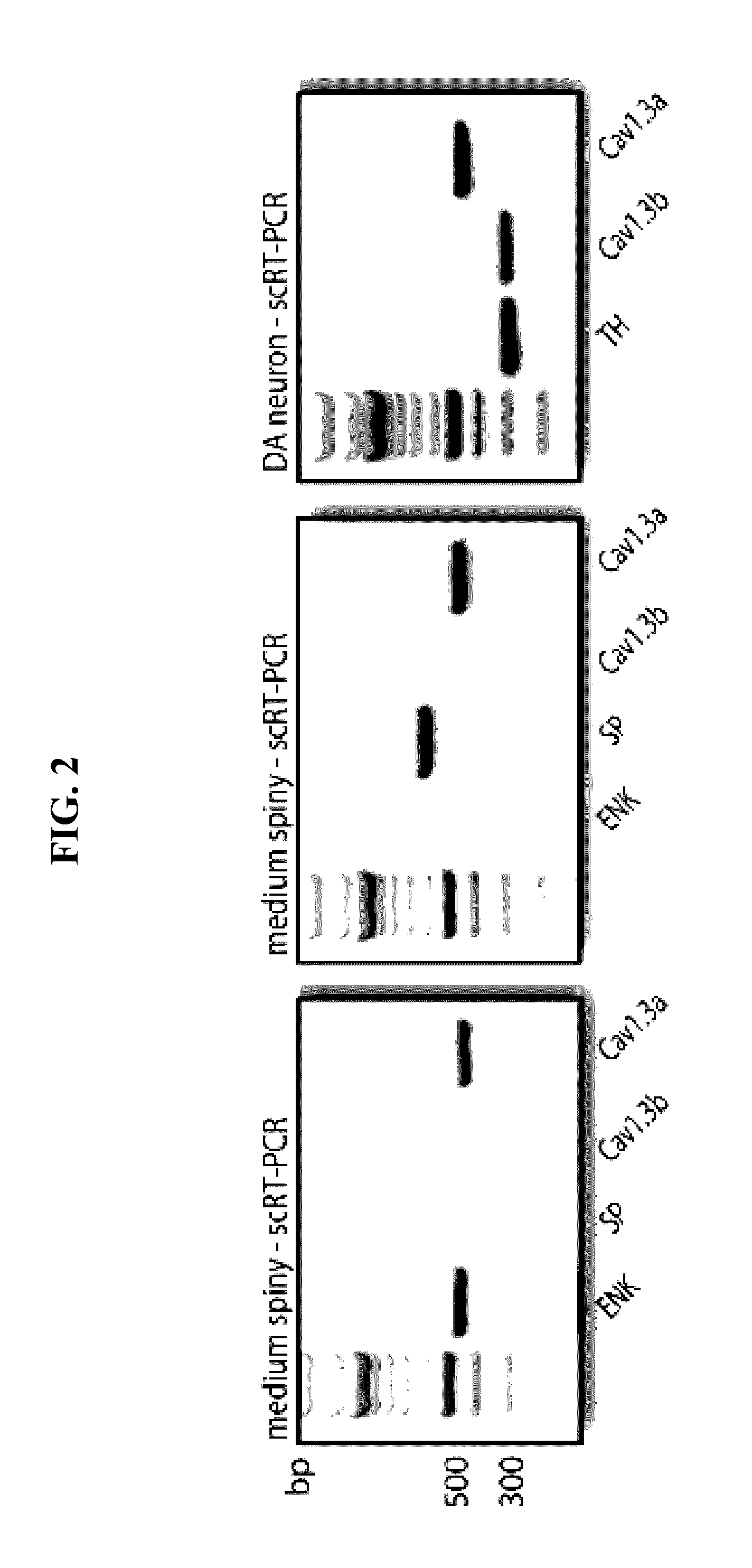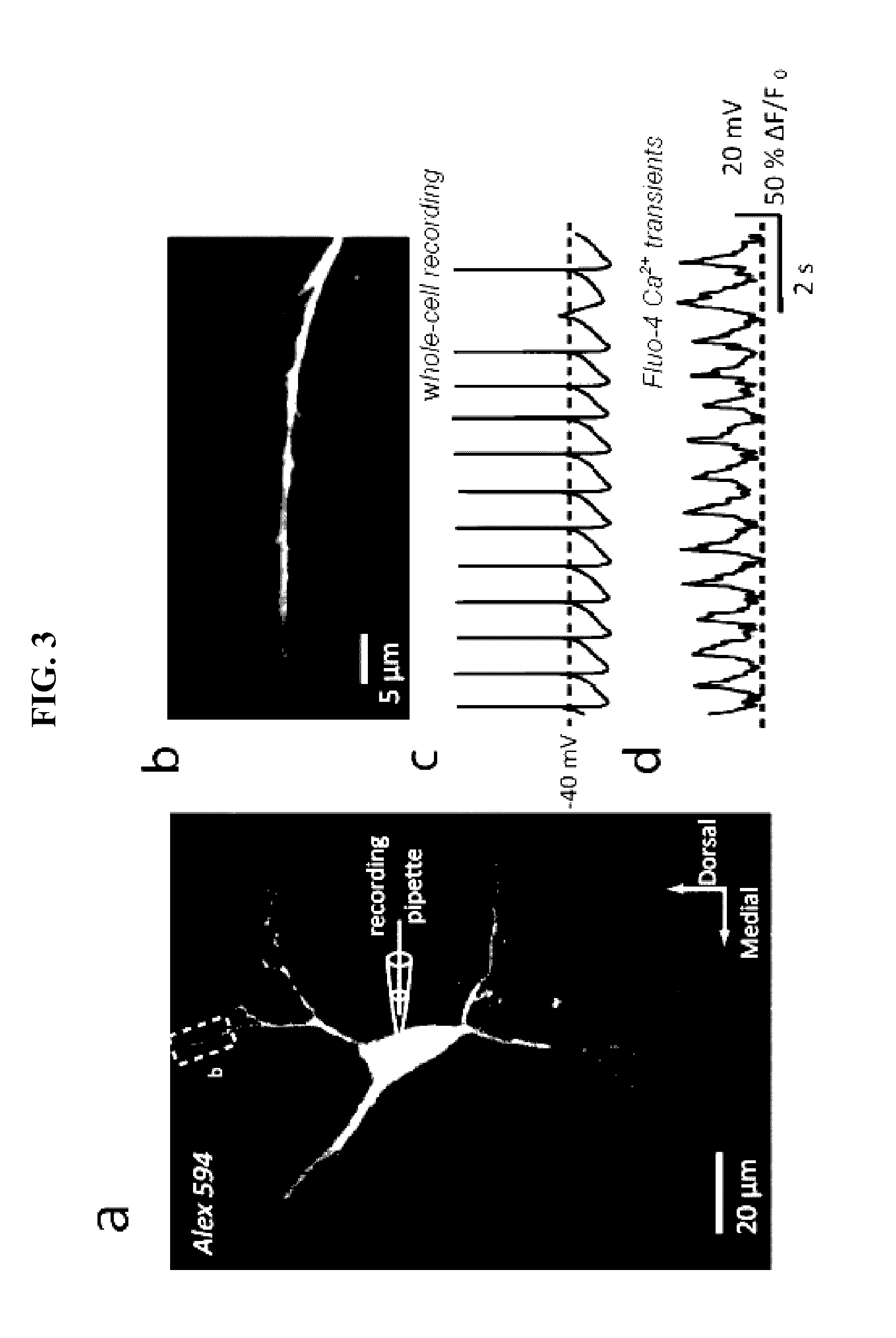Treatment for dopaminergic disorders
a technology for dopaminergic disorders and brain disorders, applied in the field of treatment of dopaminergic disorders, can solve the problems of reducing the level of dopamine in the brain, affecting the progression of pd, and affecting the effect of treatment effect, so as to bypass side effects and slow the progression of the diseas
- Summary
- Abstract
- Description
- Claims
- Application Information
AI Technical Summary
Benefits of technology
Problems solved by technology
Method used
Image
Examples
example 1
Preparation of Experimental Mouse Brain Slices
[0072]Brain slices of mice were prepared for use in different experimental procedures such as whole cell patch clamp and fluorescent staining procedures. Slices were obtained from 17-25 day old C57BL / 6 mice (Harlan), Cav1.3− / − mice (were re-derived from mice obtained from Joerg Striessnig) or BAC D1 / BAC D2 EGFP transgenic mice (obtained from Nathaniel Heintz), and P16-17 rats. All animals were handled in accord with Northwestern University ACUC and NIH guidelines. Coronal slices containing the striatum or mesencephalon were prepared at a thickness of 300-350 μm. Mice were prepared and sacrificed in one of two ways; 1) the mice were anesthetized deeply with ketamine and xylaxine, transcardially perfused with oxygenated, ice-cold, artificial cerebral spinal fluid (ACSF) and decapitated, or 2) the mice or rats were deeply anesthetized with halothane and decapitated without perfusion. The brains were rapidly removed and sectioned in oxygenat...
example 2
Electrophysiology Procedures
[0073]Whole cell patch clamp techniques were used on tissue slices to evaluate the effect of experimental conditions on the voltage gated calcium channels. Whole cell voltage-clamp or current-clamp recordings were performed using standard techniques (Choi S and Lovinger D M, 1997, Proc. Natl. Acad. Sci 94:2665-2670; Day M et al., 2005, J. Neurosci. 25:8776-87). Individual slices were transferred to a submersion style recording chamber and continuously superfused with ACSF at a rate of 2-3 ml / min at 31-33° C. Whole cell voltage and current clamp recordings were performed on dopaminergic neurons detected in the slice with the help of an infrared-differential interference contrast (IR-DIC) video microscope upon which was mounted an Olympus OLY-150 camera / controller system (Olympus, Japan). For all experiments, experimental drugs were superfused with a temperature controlled system. Isradipine, nimodipine, and tetrodotoxin were made up as stock solutions and ...
example 3
Procedure for Two Photon Laser Scanning Microscopy
[0075]Two photon laser scanning microscopy (2PLSM) was performed on mouse tissue samples to visualize intracellular conditions. 2PLSM images of medium spiny neurons in 275 μm thick corticostriatal slices were visualized with Alexa Fluor 594 (50 μM) by filling through the patch pipette. Following break in, the dye was loaded for at least 15 minutes prior to imaging. 2PLSM red signals (580-640 nm) were acquired using 810 nm excitation with 90 MHz pulse repetition frequency and ˜250 fs pulse duration at the sample plane. Maximum projection images of the soma and dendritic field were acquired with a 60× / 0.9NA water-dipping lens with 0.27 μm2 pixels and 2.6 μs pixel dwell time; ˜80 images were taken using 0.7 μm focal increments. High magnification projections of dendritic segments taken 50-100 μm from the soma were acquired with 0.17 μm2 pixels and 10.2 μs dwell time and consisted of ˜20 images taken at 0.5 μm focal steps. 2PLSM green si...
PUM
| Property | Measurement | Unit |
|---|---|---|
| thickness | aaaaa | aaaaa |
| thick | aaaaa | aaaaa |
| repetition frequency | aaaaa | aaaaa |
Abstract
Description
Claims
Application Information
 Login to View More
Login to View More - R&D
- Intellectual Property
- Life Sciences
- Materials
- Tech Scout
- Unparalleled Data Quality
- Higher Quality Content
- 60% Fewer Hallucinations
Browse by: Latest US Patents, China's latest patents, Technical Efficacy Thesaurus, Application Domain, Technology Topic, Popular Technical Reports.
© 2025 PatSnap. All rights reserved.Legal|Privacy policy|Modern Slavery Act Transparency Statement|Sitemap|About US| Contact US: help@patsnap.com



